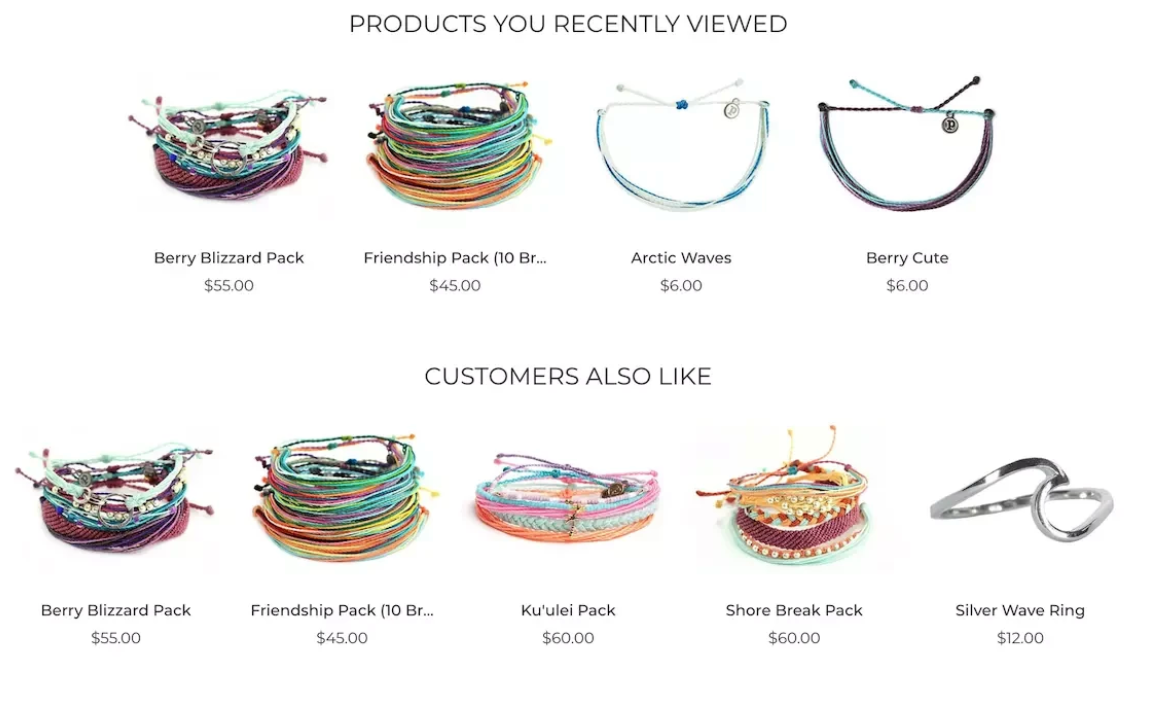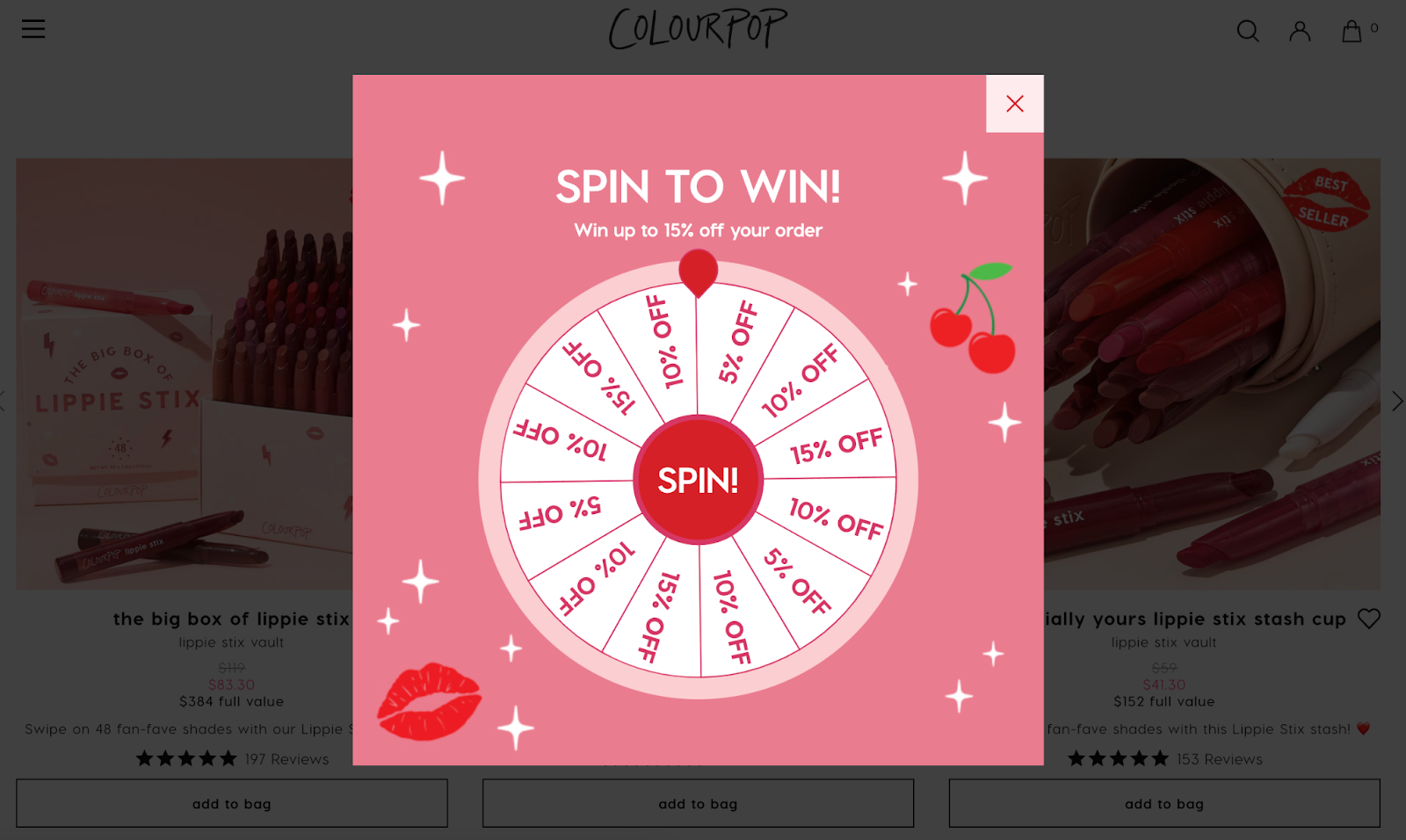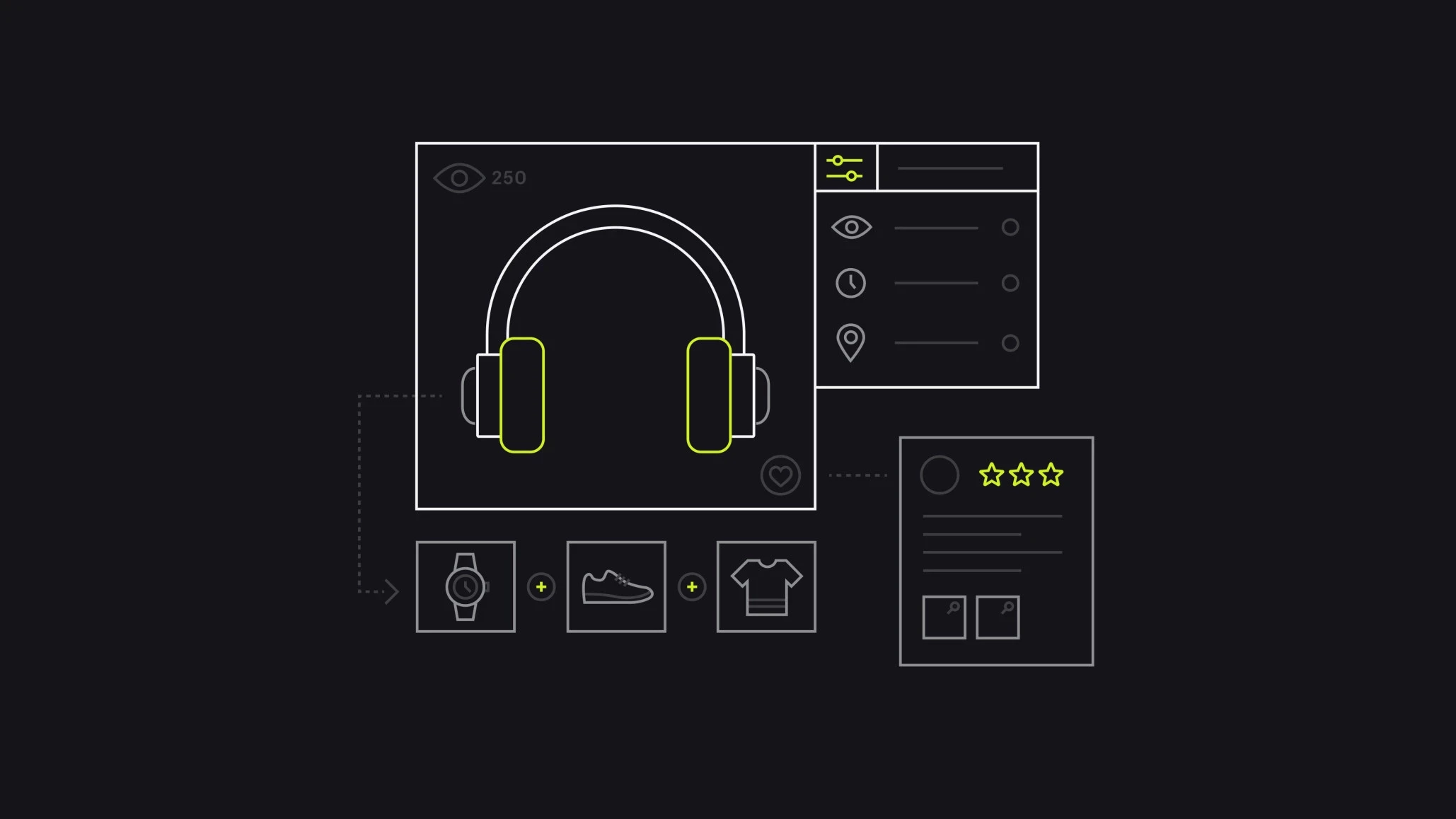Consumers today expect personalized experiences across all digital touchpoints, but not all brands deliver.
In fact, some62% of shoppersthink companies could do a better job tailoring their customer experiences.
A strategic approach to ecommerce personalization is key to ensuring your business stands out in the market. It’s also good for your bottom line, with some70% of consumersspending more with companies that offer fluid, personalized, and seamless customer experiences.
Learning the basics of ecommerce personalization can help you sell more, retain customers, and increasecustomer lifetime value.
Table of Contents
- What is ecommerce personalization?
- Benefits of ecommerce personalization
- 7 scalable ecommerce personalization tactics
- Ecommerce personalization FAQ
What is ecommerce personalization?
E-commerce personalization is the practice of tailoring online shopping experiences to individual customers. This is done by delivering relevant content, product recommendations, and offers based on their preferences, behavior, and demographics. It aims to enhance customer satisfaction, engagement, and conversion rates by providing a personalized shopping journey.
Benefits of ecommerce personalization
Increase conversion rates
With personalization, you can show relevant products to your customers based on their browsing history. This leads to higher conversion rates. According to a report by ecommerce personalization platform and consultancyMonetate, personalized product recommendations can increase conversion rates by up to 8%.
Improved customer experience
By creating a personalized shopping experience based on customers’ needs and interests, you can improve overall customer satisfaction. It also makes the shopping experience more convenient, which is what87% of millennialssay impacts their decision making, according to market research from data and tech company Numerator.
Personalized experiences can help build a stronger relationship between your business and its customers. When customers receive product recommendations that align with their preferences and purchasing habits, they’re more likely to continue shopping with your brand.
Higher average order value (AOV)
You can also increase AOV with ecommerce personalization. Personalized product recommendations can help cross sell and upsell complementary or higher-value items. You can also send tailored discounts and bundle products based on buying behavior.Monetatefound brands can increase AOV by up to 12% by tailoring the customer journey.
7 scalable ecommerce personalization tactics
Here are seven scalable tactics for ecommerce personalization, including examples.
- Leverage intelligent product-detail page recommendations
- Show continuous shopping for returning customers
- Create personalized bestseller lists to drive click-throughs
- Integrate user-generated content across your funnel
- Retarget in-session based on behavioral triggers
- Time social retargeting with smart recommendations
- Automate three personalized messaging types
1. Leverage intelligent product-detail page recommendations
产品详情页面(PDP)建议给商店ppers similar or complementary products to the ones they’re already interested in. You can leverage dynamic upselling by recommending items higher in price but similar in style or by brand. Even with higher margins they’re proven to convert the best.
Cross-selling on PDPs makes it easier to recommend complementary items and inspire online shoppers to increase their cart size.
Pura Vidawas the first to leverageYotpofor customer reviews andNostofor personalization. It created two recommendation categories on its product pages:

Pura Vida showing related products to browsers.
Griffin Thall, co-founder ofPura Vida Bracelets, used the Nosto integration with Shopify Plus, saying the platform “truly allowed us to sync our operations with vendors, apps and tech partners, as well as provide amazing reporting.”
2. Show continuous shopping for returning customers
Netflix’s Continue Watching feature is a powerful engagement tactic. When applied to ecommerce, it has a similar impact to continuous shopping recommendations. For high-growth online retailers, it’s a value-add.

Netflix recommends that users continue watching content they previously viewed.
With Netflix, instead of manually searching and scanning through videos, you can pick up right where you left off with a click.
Similarly, continuous shopping recommendations remember your visitor’s selected items and preferences through previous sessions. Website visitors can pick up right where they left off. So, it’s easier for your visitors to buy when they’re ready without having to search again for the products they want.
3. Create personalized bestseller lists to drive click-throughs
People are drawn to popular products—think of the magic of theNew York Timesbestseller book list. To shake things up, you can highlight your bestsellers over a designated period of time.Campus Proteinused this tactic anddoubled its conversions year over year.

Energy drink category page on Campus Protein's website.
You can get creative with this approach: instead of ranking products by sales, try displaying the most reviewed or segment by location.
Showing bestsellers by location can be powerful if you sell fashion in multiple climates or if your online store specializes in sports team gear. Your customers in Los Angeles probably aren’t shopping for the same clothing during winter as shoppers in New York City. Find what works best for your unique products and customers.
4. Integrate user-generated content across your funnel
User-generated content (UGC)can bring another dimension to your site. By posting photos, videos, and reviews from customers, visitors get the chance to see your product in real life.
Consumers are receptive to making peer-based decisions. In the US,46% of consumerssay they learn about new and interesting products from friends and acquaintances.Shopify Flowmakes it possible to easilyintegrate all of your tech toolsto create seamless, inspiring experiences.
Most businesses stop short of integrating UGC throughout their onsite funnel, limiting its use to ratings on product pages or shares on social media.
Shoe companySeaVeesmakes UGC (collected from Instagram) prominent on its homepage and PDPs by linking directly to a curated collection of shoppable posts, many of which are submitted by customers through SeaVees branded hashtag:

SeaVees’s homepage showcases Instagram posts from customers who tag the brand in their posts.
5. Retarget in-session based on behavioral triggers
Off-site retargeting can be expensive. Thankfully, on-site interstitials are an alternative. The key is to be intuitive, not intrusive, with your pop-ups.
You can do this by timing or triggering pop-up offers to match each visitor’s in-session behavior. Trigger these pop-ups through automation based on characteristics like number of sessions, shopping cart value, and browsing behavior (both historical and real-time).
It’s a good idea to offer first-time visitors exclusive discounts and promotions in exchange for their email addresses so you can market to them. Here’s an example from cosmetics brandColourpop:

Colourpop’s Spin to Win pop-up on its homepage offers new visitors an interactive way to get a discount ranging from 5% to 15% off a purchase.
Once someone adds items to their cart, you can offer tiered discounts to drive upaverage order value (AOV).
另一个伟大的弹出式选择是重建returning visitors with reminders of what they’ve browsed (but never purchased) in order to drive them toward checkout.
6. Time social retargeting with smart recommendations
Even if a visitor leaves your site, there are ways to get their attention back through retargeting on social media. To make this approach successful, you need to choose your timing wisely.
One of the more advanced forms of retargeting is granulated retargeting. The value of a site visitor declines the longer they’ve been away from your site, so you can save a lot on ad spend by layering your retargeting as their value declines. You can also shorten your retargeting period to 7 to 14 days so you’re engaging customers when they’re most likely to still convert.
It’s also important to be mindful of how you’re approaching these shoppers: whether it’s with products relevant to their previous purchases or by reminding them of yourunique selling proposition.
BOOM! By Cindy Joseph, for example, is a cosmetics company that sends retargeting ads after customers visit the homepage and collection page. It is focused on social proof and how other customers find the brand.

Facebook retargeting ad from Boom! By Cindy Joseph.
7. Automate three personalized email and SMS types
If an online shoppershares their email address or mobile number with you, your brand has another way toengage and convertthem. By continuously engaging customers, you can reach out no matter where your customers are, which keeps your company top of mind.
Here are three messaging techniques to get their attention:
1. Abandoned cart messaging
Optimizing your checkout experience is a necessary step toreducing cart abandonment, but you’ll never eliminate it altogether. For example, many shoppers get distracted and leave ecommerce sites with items still in their carts.
When this happens, you can remind them with an abandoned cart email. Clothing companyAmerican Giantsends customers an email containing items they left in their cart to encourage them to come back and finish the purchase.

American Giant sends abandoned cart emails based on customers’ shopping carts.
2. “We miss you” messaging
If a shopper forgets about their cart, you can nudge them with a kind email. Sports fan gear sellerSupporters Placesends emails to reengage visitors and announce new, exciting products to remind visitors of what they looked at in the past.
3. Order follow-up messaging
Checkout is not theend of your relationship with a customer. Check in with buyers after purchase and provide customized product recommendations based on their previous orders.
Here’s how baby and child sleepwear storeergoPouchdoes it:

ergoPouch sends follow-up emails to customers with additional items they could buy.
Learn more:10 omnichannel examples
Build an ecommerce personalization strategy today
It’s no secret ecommerce personalization has changed people’s expectations of retail brands. No longer can you get away with mass marketing or generic experiences for your audience. Every interaction needs to be memorable and bespoke in your ecommerce store.
WithShopify Plus, you can build deep marketing automations that tag high-value customers, trigger personalized email marketing campaigns, and improve retargeting efforts. That way, you can delight your customer base and grow your store.
Ecommerce personalization FAQ
What are the 4 Rs of personalization?
- Relevance: Making sure that the content delivered to the user is relevant to their needs.
- Recognition: Remembering user preferences and behaviors in order to deliver personalized content.
- Responsiveness: Providing timely, relevant content that is tailored to the user’s needs.
- Results: Measuring the effectiveness of personalization efforts and adjusting strategies to maximize user engagement.
How important is personalization in ecommerce?
Personalization is important in ecommerce because consumers today expect personalized experiences across all digital touchpoints, from product recommendations to tailored content and offers. Personalization helps improve conversion rate optimization, increase engagement, and drive sales. It can help ecommerce businesses build customer loyalty, increase customer satisfaction, and develop a competitive advantage.
What is personalization and customization in ecommerce?
Personalization and customization in ecommerce are the processes of customizing a user’s experience by delivering content tailored to their individual needs, interests, and preferences. This could include personalized recommendations for products, tailored ads, and custom content. Website personalization can help make a customer’s shopping experience more efficient by presenting the most relevant products and content.
Customization, on the other hand, allows customers to adjust their desired product or service to their own specific needs and preferences. Examples of customization include changing a product’s size, color, or function, or selecting from a range of options to create a unique product.
What are examples of personalized marketing in ecommerce?
- Targeted email campaigns: Sending emails to loyal customers that are tailored to their interests and needs.
- Personalized product recommendations: Using customer data to make product recommendations that are tailored to each customer.
- Social media engagement: Engaging with new customers on social media and responding to their questions, comments, and feedback.
- Customized content: Creating content that is tailored to individual customers and their interests.
- Loyalty programs: Offering loyalty programs that reward customers for their buying habits and engagement.
- Dynamic pricing: Adjusting prices based on customer behavior.
How do I personalize my ecommerce website?
Here are 10 tips for personalizing an ecommerce website:
- Use customer data:Use customer data to tailor personalized experiences. Track customer behaviors, demographics, locations, previous purchases, search histories, and other personal data points to create personalized shopping experiences.
- Personalized recommendations:Offer product recommendations based on the customer’s interests and activities. This can be done using AI algorithms to suggest new products that are related to the customer’s past purchases or browsing history.
- Customized content:Create customized content for different segments of your audience. For example, if you have a segment of customers who are interested in fashion, create a blog or video series with fashion tips and trends.
- Personalized marketing:Use personalized marketing messages, such as unique emails and special offers, to engage with your customers.
- Loyalty programs:Create personalized loyalty programs that reward customers for their buying habits and encourage repeat purchases.
- Customer service:Provide personalized customer service by addressing customers by name and offering personalized solutions to their problems.
- User interface:Design a user-friendly interface that is customized to fit the preferences of your customers. Customize the layout, colors, and fonts to match their preferences.
- Real-time assistance:提供即时聊天or chatbots to enhance the shopping experience.
- Personalized packaging:Create customized packaging for customers to enhance the overall experience.
- Reviews and ratings:Encourage customers to leave personalized reviews and ratings to give feedback and help others make informed purchase decisions.
Read More
- Why Pop-up Shops Are the Future of Physical Retail
- Conversion Rate Optimization: What Everyone Gets Wrong and How to Do It Right
- The 1 Rule for Building a Billion-Dollar Business
- Back-to-School Ecommerce: Infographic & Lessons from $58.1B in Online Sales
- How You Can Profit from Personalizing Content on Your Ecommerce Store
- Top Omnichannel Logistics and Supply Chain Challenges in Ecommerce
- What Your Visitors are Thinking Right Before They Click “Add to Cart"
- 品牌忠诚度在电子商务:为什么以及如何Communities Are Key to Long-Term, Multi-Million Dollar Success
- 11 Ecommerce Checkout Best Practices: Improve the Checkout Experience and Increase Conversions
- What 1-Click Checkout Can Do for Your Small Business






